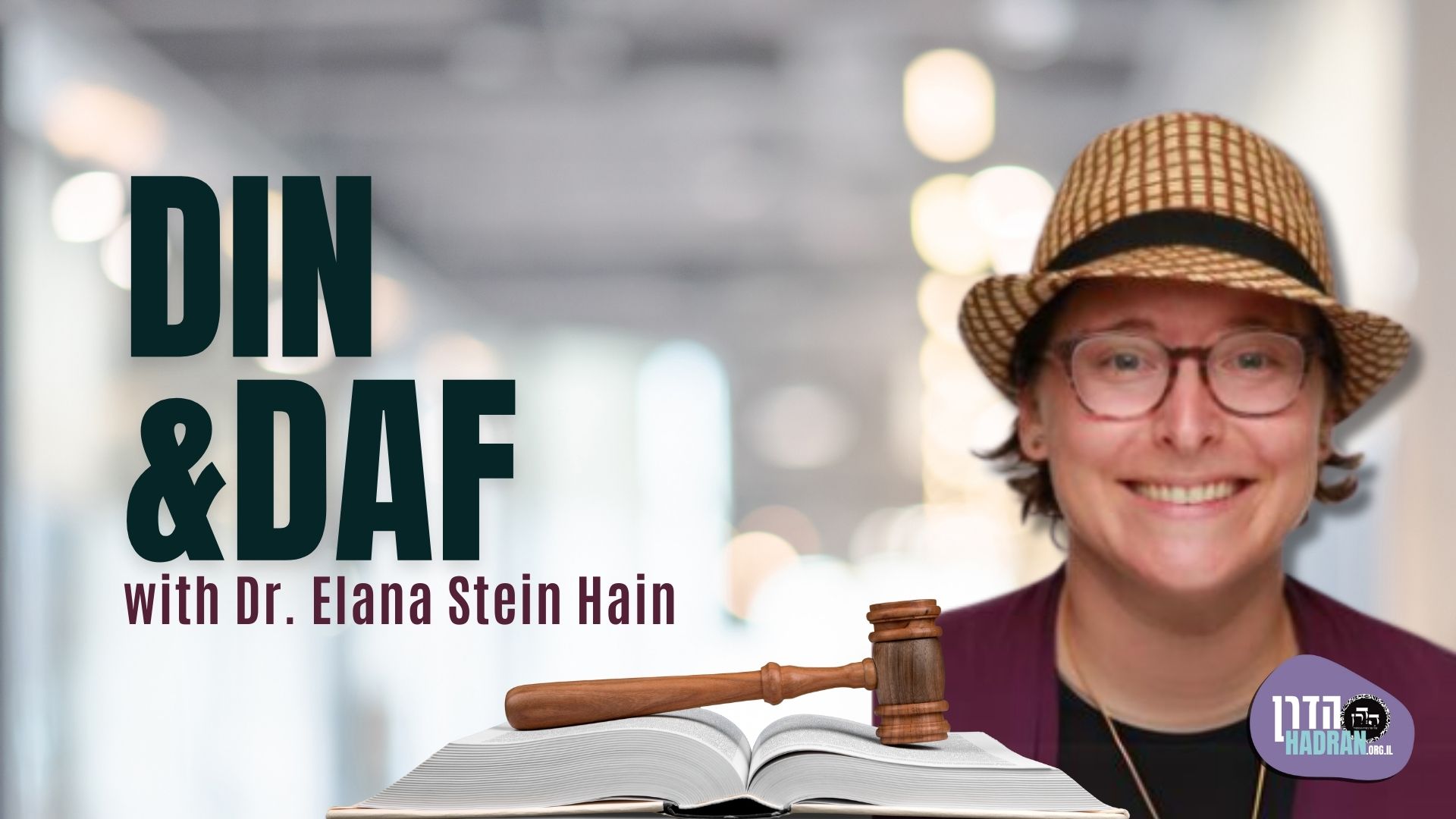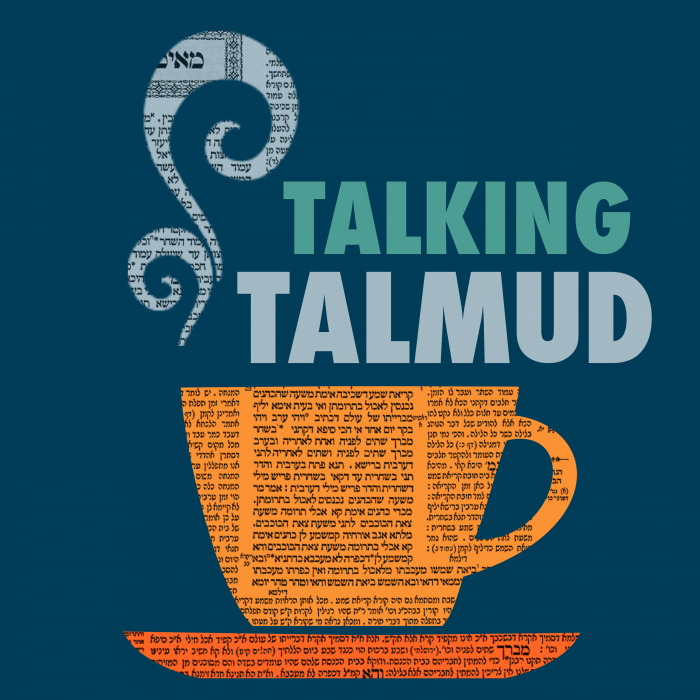Bava Batra 162
אָמַר רַב עַמְרָם: לְפִי שֶׁאֵין לְמֵדִין מִשִּׁיטָה אַחֲרוֹנָה.
Rav Amram says: It is because one may not learn any new details from the final line of a document. There is a concern that the holder of the document may have written in an extra line of text to his advantage, between the text and the witnesses’ signatures. Therefore, any new information contained in the last line is disregarded. Since the final line is disregarded, it is necessary that the final line of a document contain only a review of what is already written in it.
אֲמַר לֵיהּ רַב נַחְמָן לְרַב עַמְרָם: מְנָא לָךְ הָא? אֲמַר לֵיהּ, דְּתַנְיָא: הִרְחִיק אֶת הָעֵדִים שְׁנֵי שִׁיטִין מִן הַכְּתָב – פָּסוּל, שִׁיטָה אַחַת – כָּשֵׁר.
Rav Naḥman said to Rav Amram: From where do you know this? Rav Amram said to him: As it is taught in a baraita (Tosefta 11:1): If one writing a document distanced the witnesses’ signatures two lines from the text of the document, leaving two lines blank, the document is not valid, as it would be possible for the holder of the document to fill in false information in those lines. But if one distanced the signatures one line from the text, the document is valid.
מַאי שְׁנָא שְׁנֵי שִׁיטִין – דִּלְמָא מְזַיֵּיף וְכָתֵב; שִׁיטָה אַחַת נָמֵי, מְזַיֵּיף וְכָתַב! אֶלָּא לָאו שְׁמַע מִינַּהּ אֵין לְמֵדִין מִשִּׁיטָה אַחֲרוֹנָה? שְׁמַע מִינַּהּ.
Rav Amram analyzes the baraita: What is different in the case of two blank lines that the document is not valid? If you say that perhaps the holder of the document will take advantage of those two blank lines, and forge unverified information and write it in those lines, then in the case of one line left blank as well, he can forge information and write it in that line. Rather, must one not conclude from the baraita that one may not learn any new details from the final line of a document? Therefore, only when two lines are left blank is there a concern that false information would be added to the penultimate line. The Gemara affirms: Conclude from this baraita that it is so.
אִיבַּעְיָא לְהוּ: שִׁיטָה וּמֶחֱצָה, מַאי? תָּא שְׁמַע: הִרְחִיק אֶת הָעֵדִים שְׁנֵי שִׁיטִין – פָּסוּל. הָא שִׁיטָה וּמֶחֱצָה – כָּשֵׁר.
A dilemma was raised before the Sages: If the space of a line and a half is left blank, what is the halakha? The Gemara seeks a solution to the dilemma. Come and hear what was stated in the baraita cited earlier: If one writing a document distanced the witnesses’ signatures two lines from the text of the document, leaving two lines blank, the document is not valid. One can infer: But if there is a gap of only a line and a half, the document is valid.
אֵימָא סֵיפָא: שִׁיטָה אַחַת – כָּשֵׁר. שִׁיטָה אַחַת הוּא דְּכָשֵׁר, הָא שִׁיטָה וּמֶחֱצָה – פָּסוּל! אֶלָּא מֵהָא לֵיכָּא לְמִשְׁמַע מִינַּהּ.
The Gemara deflects this proof: Say the last clause of the baraita: If one writing a document distanced the witnesses’ signatures one line from the text of the document, the document is valid. One can infer: It is only when there is a gap of one line that the document is valid, but if there is a gap of a line and a half it is not valid. The Gemara states: Rather, no inference is to be learned from this baraita.
מַאי הָוֵי עֲלַהּ? תָּא שְׁמַע, דְּתַנְיָא: הִרְחִיק אֶת הָעֵדִים שְׁנֵי שִׁיטִין מִן הַכְּתָב – פָּסוּל. פָּחוֹת מִכָּאן – כָּשֵׁר.
What halakhic conclusion was reached about this matter? Come and hear a proof from a different source, as it is taught in a baraita (Tosefta 11:10): If one writing a document distanced the witnesses’ signatures two lines from the text of the document, the document is not valid, but if the gap is less than that, it is valid. It is clear from the baraita that any gap less than two full lines does not invalidate the document.
הָיוּ אַרְבָּעָה וַחֲמִשָּׁה עֵדִים חֲתוּמִין עַל הַשְּׁטָר, וְנִמְצָא אֶחָד מֵהֶן קָרוֹב אוֹ פָּסוּל – תִּתְקַיֵּים עֵדוּת בַּשְּׁאָר.
The baraita continues: If there were four or five witnesses signed on the document, and one of them was found to be a relative of one of the parties in the document, or one of them was found to be otherwise disqualified from bearing witness, the testimony on the document may be established via the other witnesses.
מְסַיַּיע לֵיהּ לְחִזְקִיָּה, דְּאָמַר חִזְקִיָּה: מִלְּאָהוּ בִּקְרוֹבִים – כָּשֵׁר.
The Gemara draws a further conclusion from this baraita: This supports the opinion of Ḥizkiyya, as Ḥizkiyya says: If one filled in the gap between the document and the signatures with signatures of relatives, the document is valid.
וְאַל תִּתְמַהּ, שֶׁהֲרֵי אֲוִיר סוּכָּה פּוֹסֵל בִּשְׁלֹשָׁה, סְכָךְ פָּסוּל פּוֹסֵל בְּאַרְבָּעָה.
Ḥizkiyya continued: And do not be surprised by this, as a similar situation is found with regard to the roofing of a sukka. Empty space in the roofing of a sukka disqualifies the sukka if the space extends for three handbreadths, whereas materials that are unfit to be used as roofing disqualify the sukka only if the unfit material extends for four handbreadths. If a sukka had a gap in its roofing of three handbreadths it is disqualified, but if the gap is filled in with unfit material the sukka is valid, since it is less than four handbreadths. This is comparable to the situation with a document: If there is a significant gap between the text and the signatures the document is not valid, but if the gap is filled in with signatures of those disqualified from bearing witness it is valid.
אִיבַּעְיָא לְהוּ: שְׁנֵי שִׁיטִין שֶׁאָמְרוּ –
§ A dilemma was raised before the Sages: With regard to the gap of two blank lines between the text and the signatures, which the Sages said invalidates the document,
























